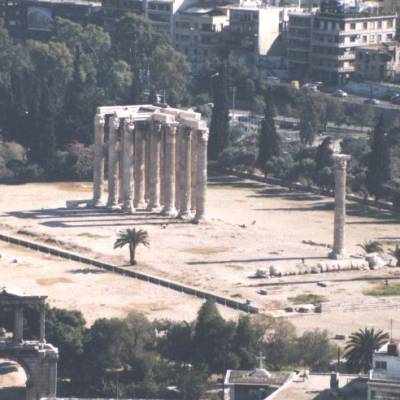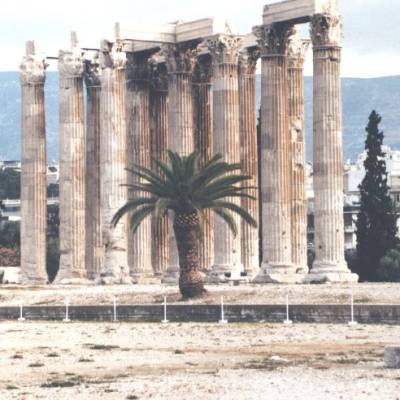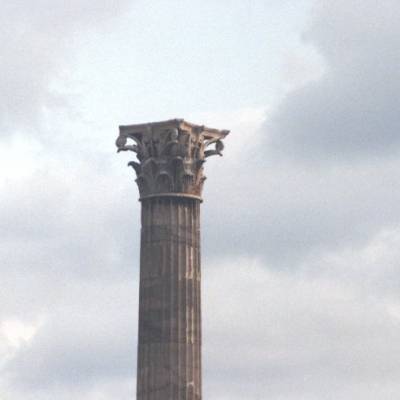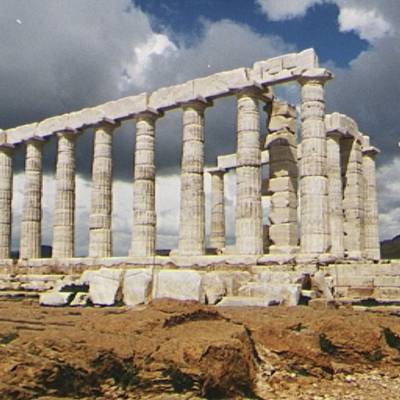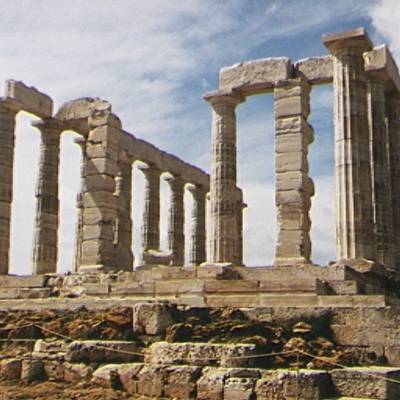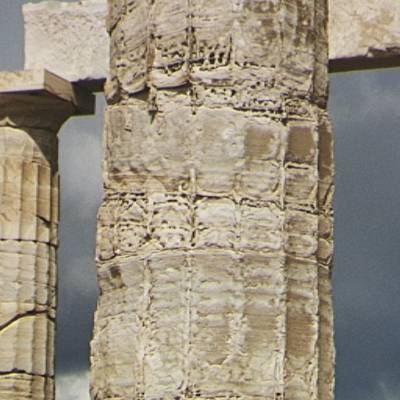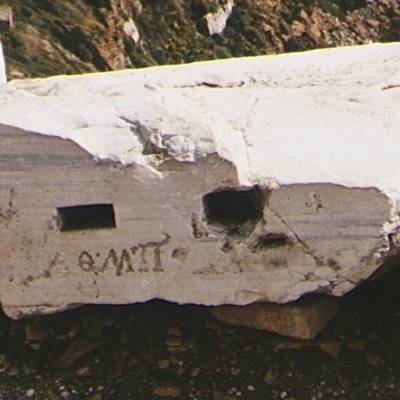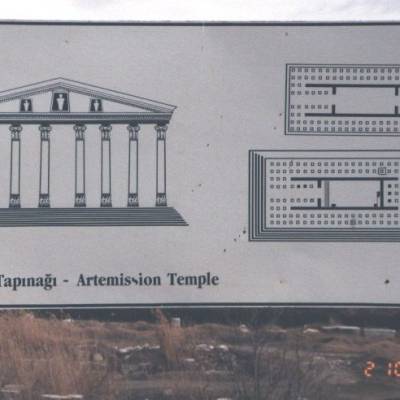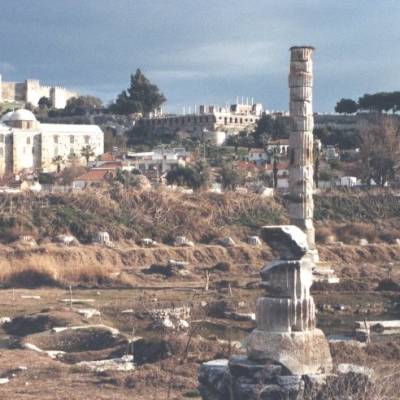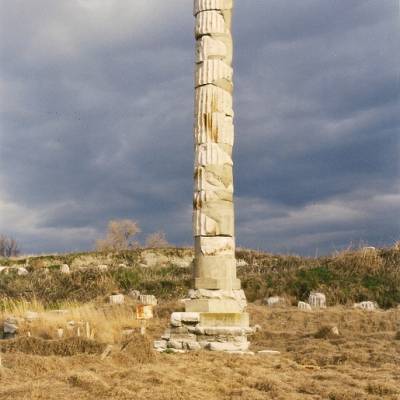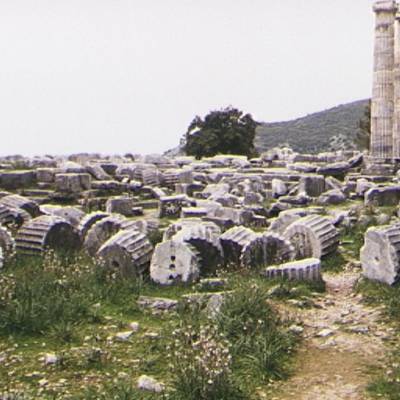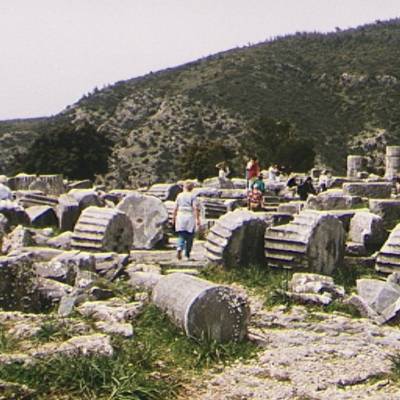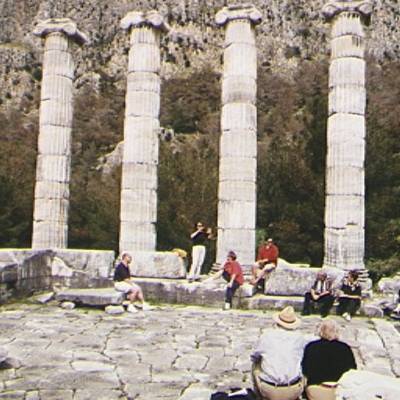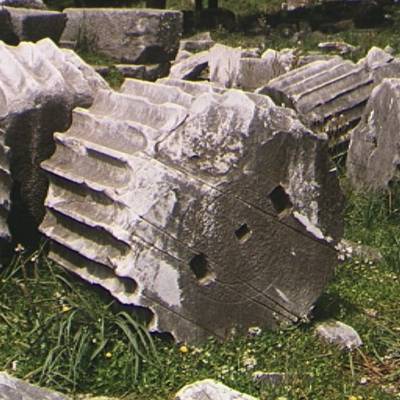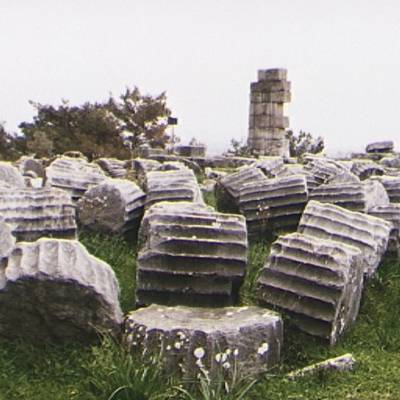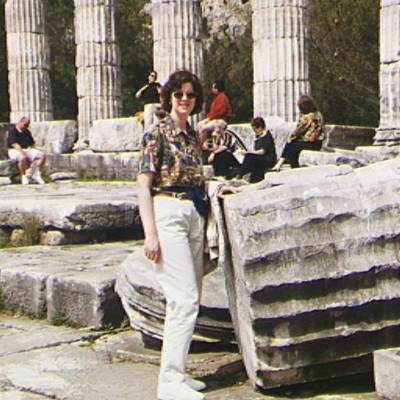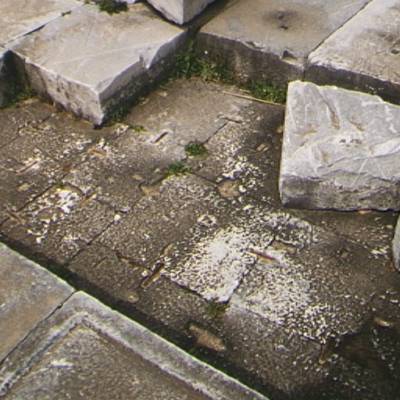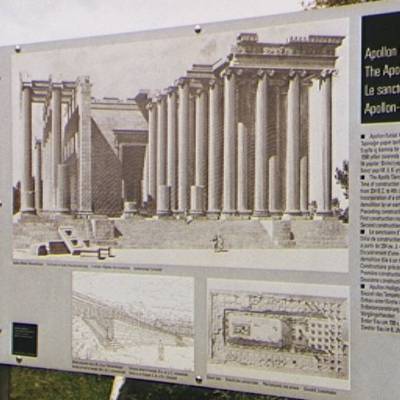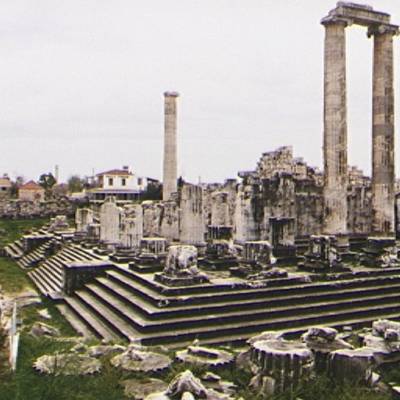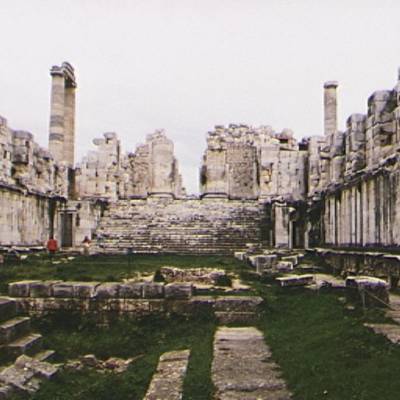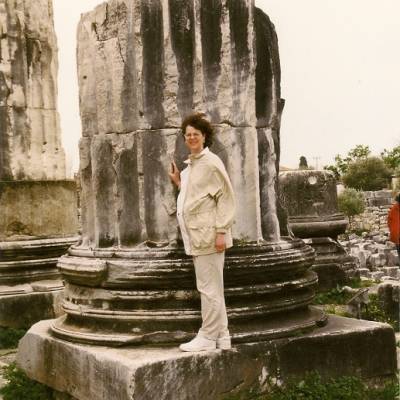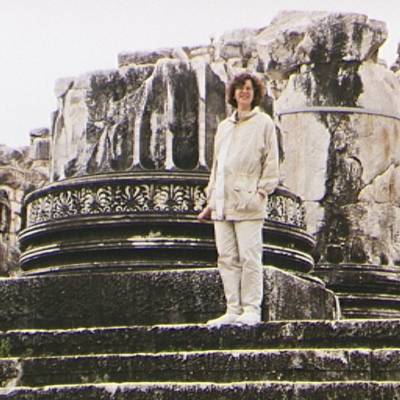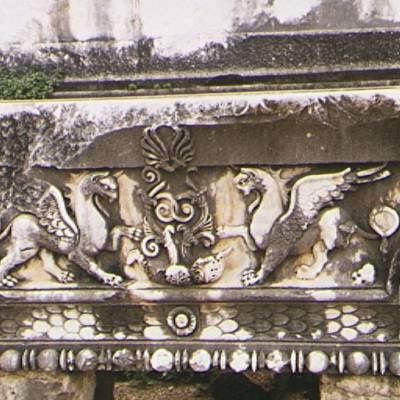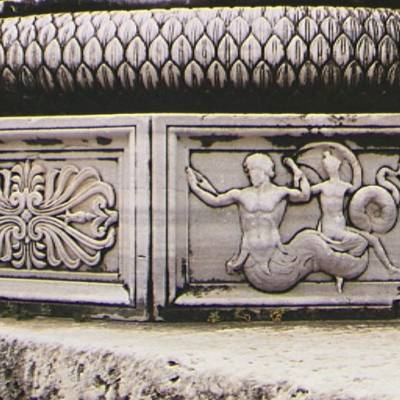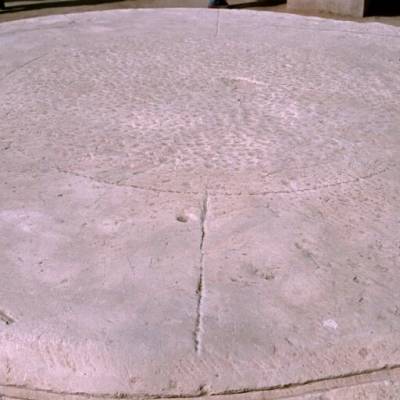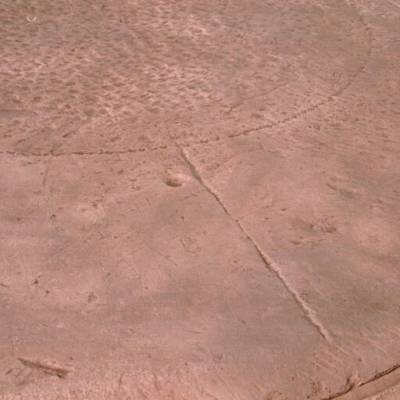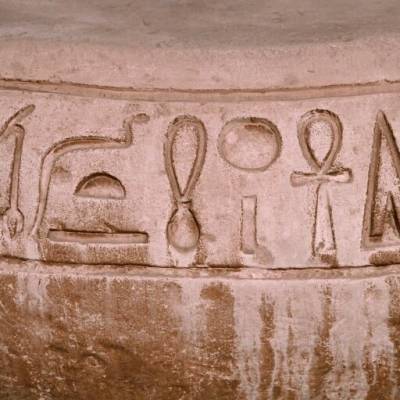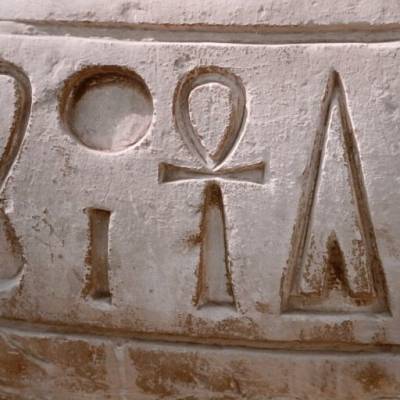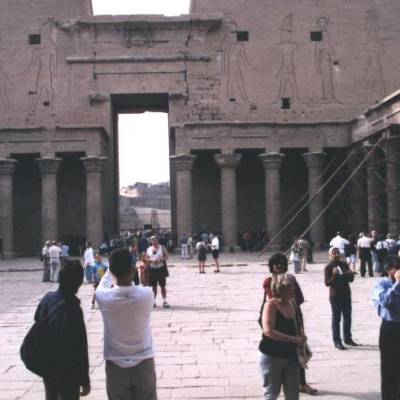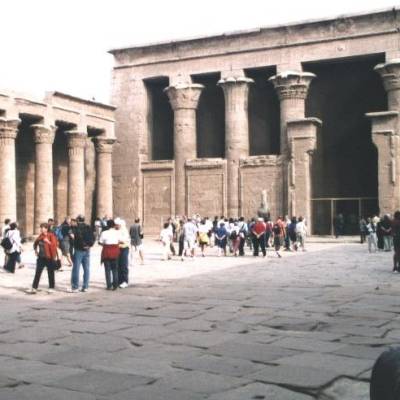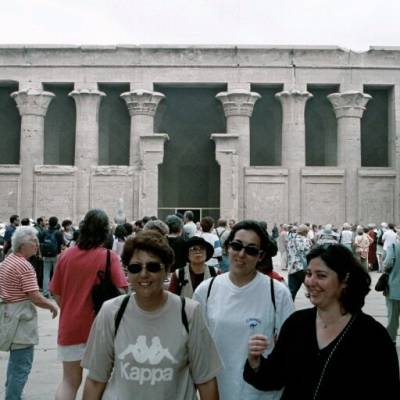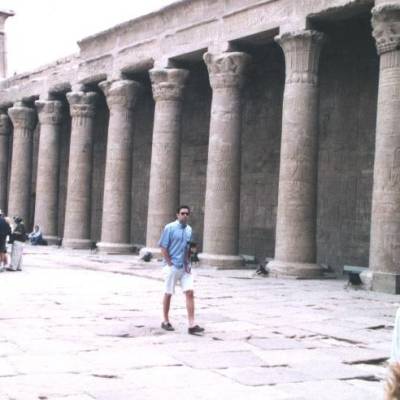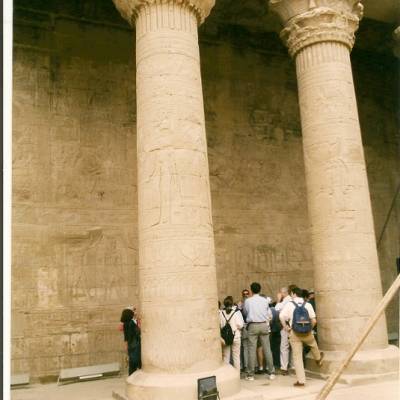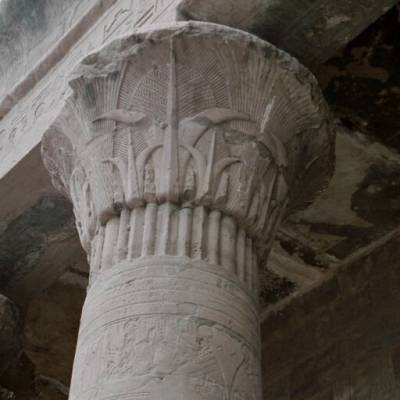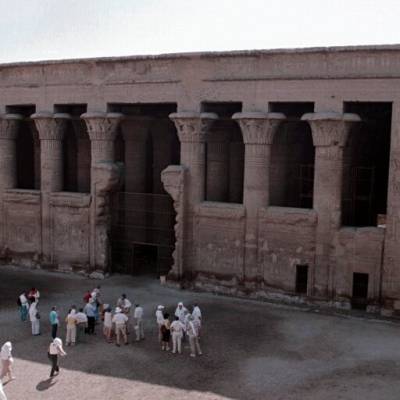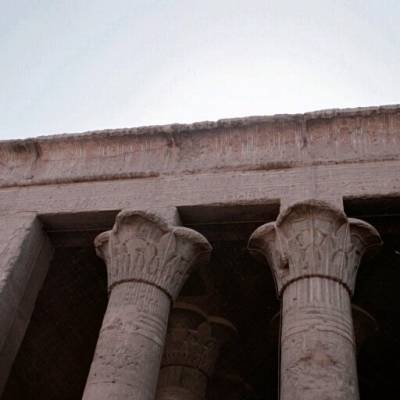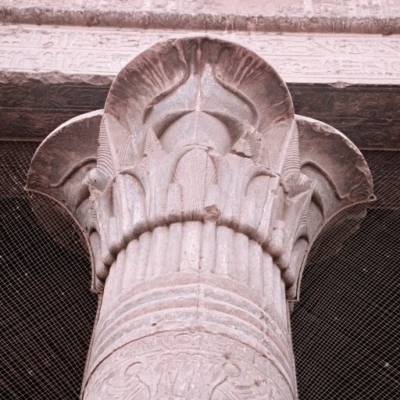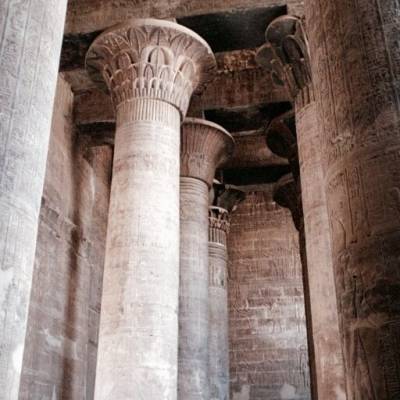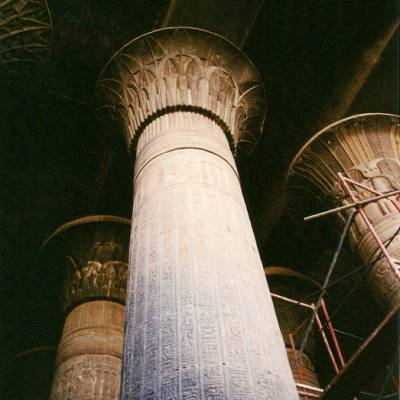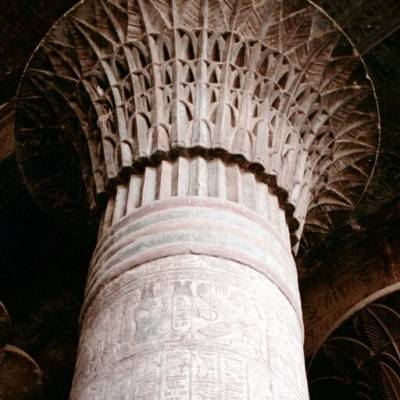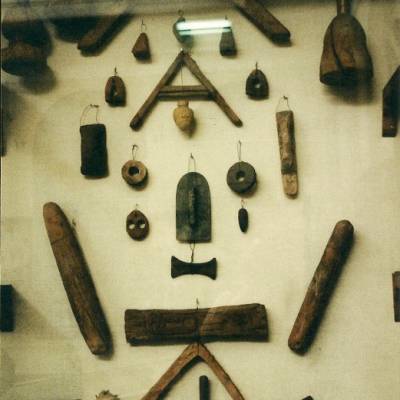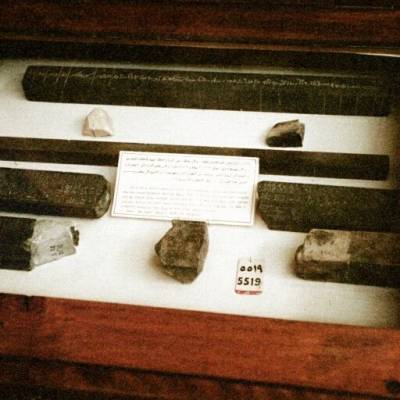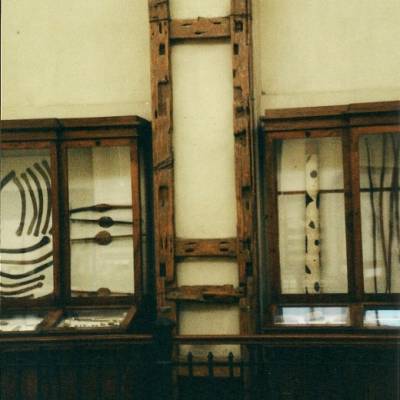Table of Contents
CLADDING PROJECTS FROM THE STONE MASTERS OF OLD
While employed at Flad & Associates of Wisconsin I had the opportunity to be project engineer for a number of stone cladding projects. Modern-day architects and designers drew their inspiration for stone design from the stone masters of old.
After completing my degree in Architectural Studies ('73) I never really gave too much thought to the art and architectural history courses I had taken, but did marvel at the immense stone structures that these master builders were able to erect. It wasn't until after I had left Flad and had the opportunity to travel abroad and visit some of these ancient building sites that I thought once again of those architectural history studies.
Below are just a few of the many photos I took of the tombs and temples built by these stone masters of old. Note that since we were involved in the modern-day stone engineering design of structures while on these trips I paid particular attention as to how these stone artisans of old assembled and anchored their stone structures.
The Acropolis, Athens, Greece
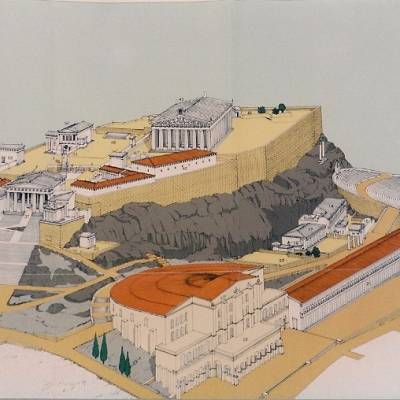
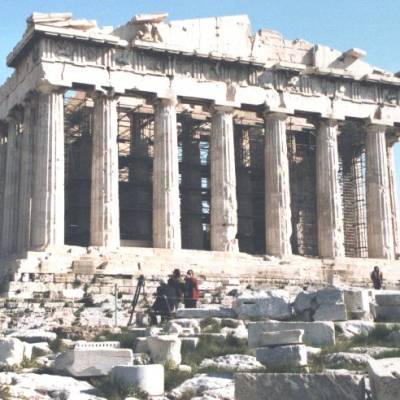
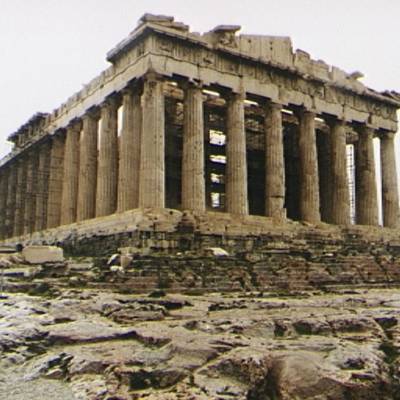
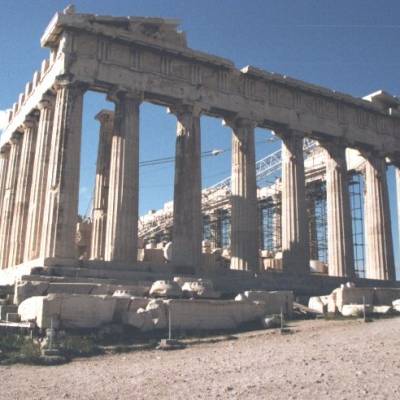
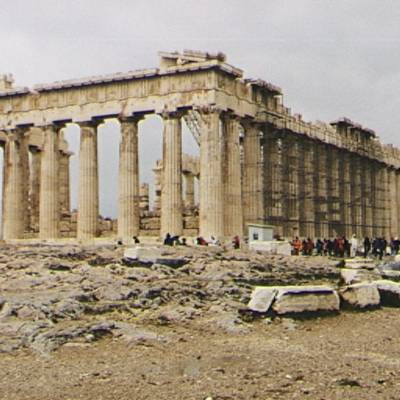
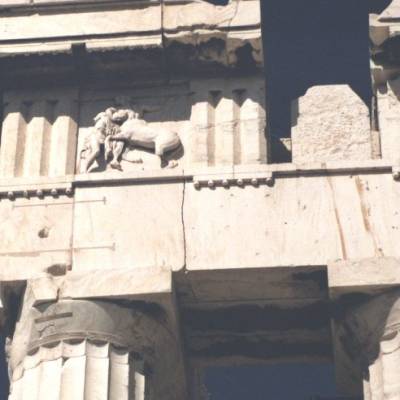
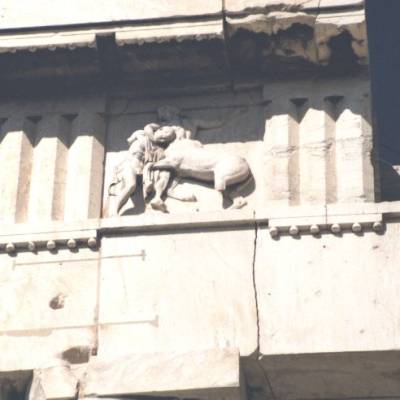
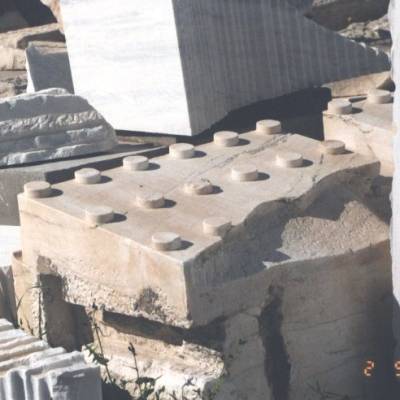
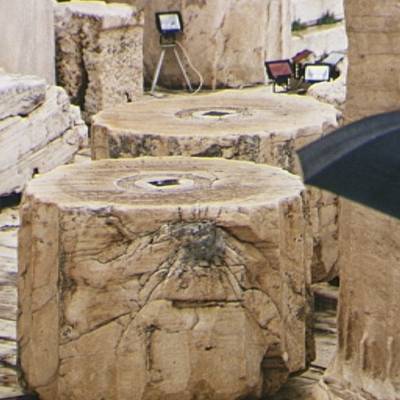
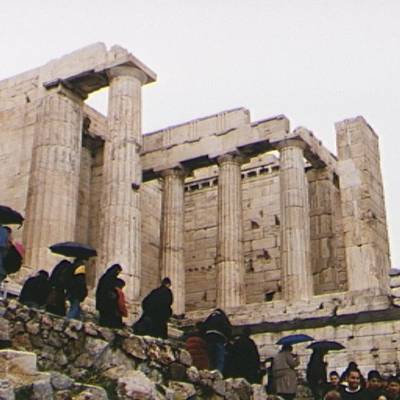
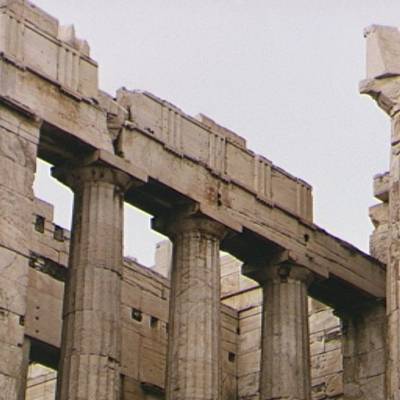
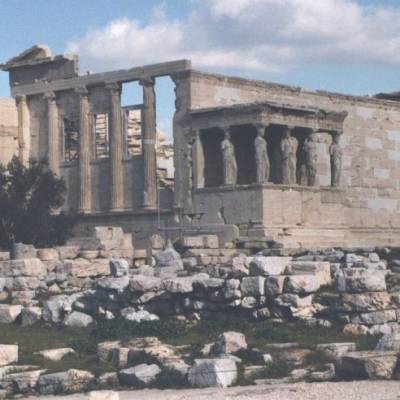
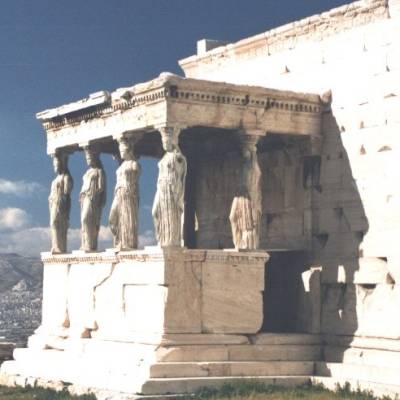
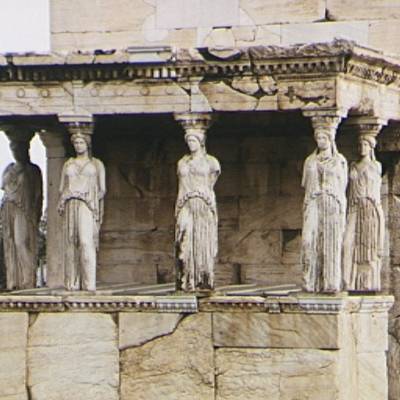
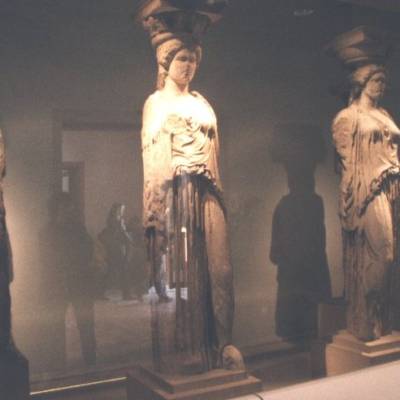
Notes:
Beginning in the mid 5th c. B.C. up till today three temples dedicated to the worship of Athena Parthenos have succeeded each other on the same site. Parthenon III was begun in 447 B.C. by architects Iktinos and Kallikrates and construction lasted for 10 years.
Most of the original pediment sculptures to survive the 1687 gunpowder explosion were seized by Lord Elgin and are now in the British Museum (Figure 6 and 7). Figure 8 shows mutule, slablike element projecting from under the face of the Doric cornice.
The Propylaia built on the old Late Archaic portico to plans of the architect Mnesikles and was part of a building program begun by Pericles (Figure 10 and 11). Its cost was said to be 2,012 talants.
The Erechtheion represents the “rich style” on the sacred rock. Work began between 421-415 B.C. and was completed around 406 B.C. Caryatids on the present porch are now concrete copies (Figures 12-14).
The Temple of Olympian Zeus, Athens, Greece
Notes:
The Temple of Olympian Zeus was begun in the 6th century B.C. and took over 700 years to complete. The largest temple in Greece, it was completed by Hadrian in 131 A.D. Figure 3 shows a Corinthian column detail. The column is 17m (56') high and has a 1.7m (5.6') base.
The Temple of Poseidon, Cape Sounion Greece
Notes:
The Temple of Apollo, Delphi, Greece
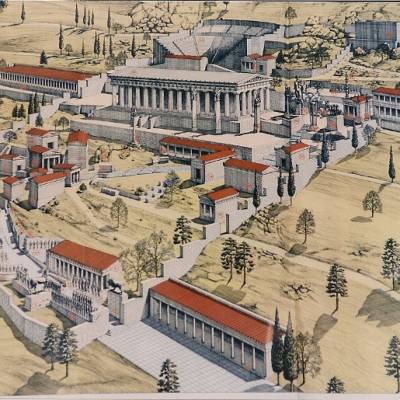
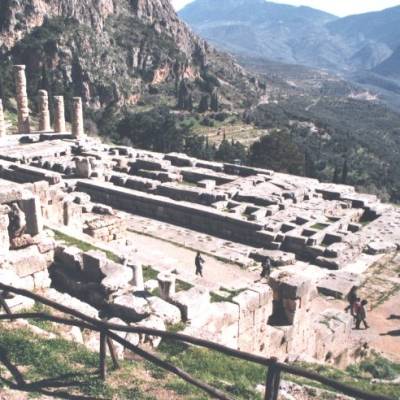
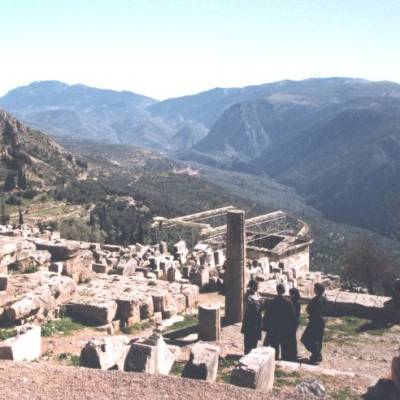
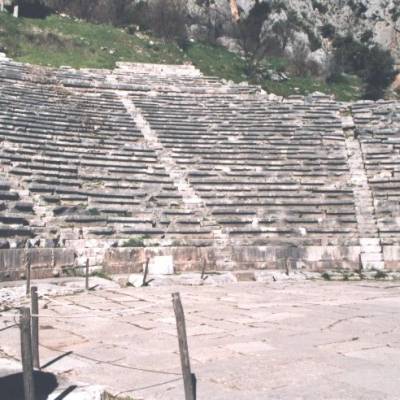
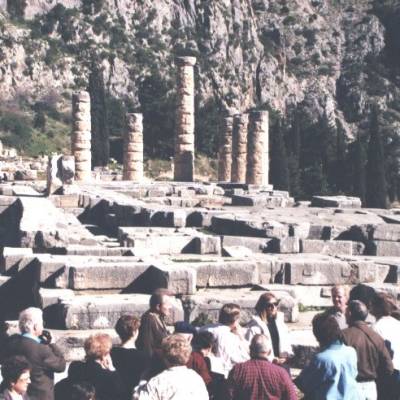
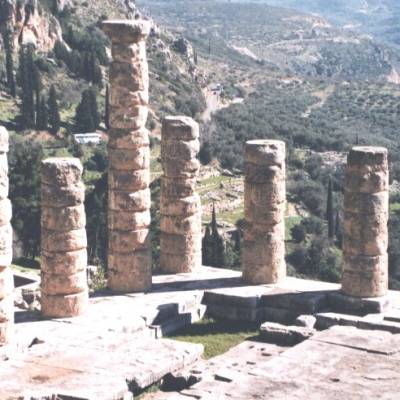
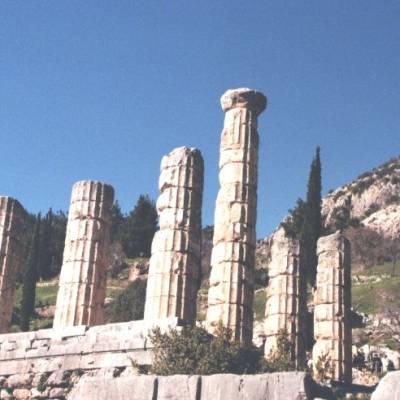
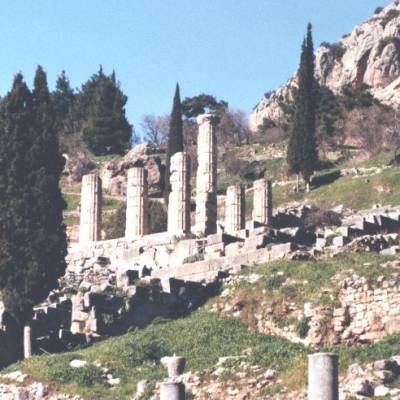
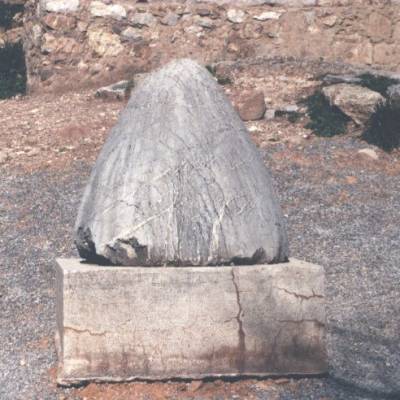
Notes:
The Archaic Temple of Apollo, Corinth, Greece
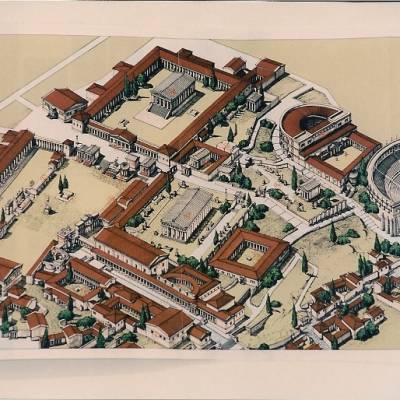

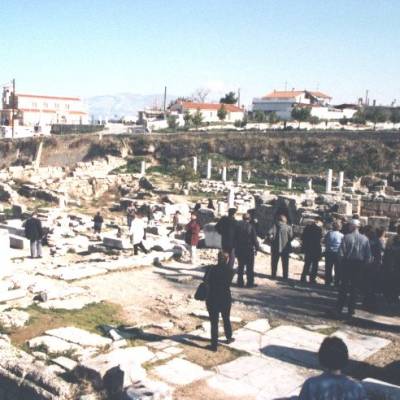
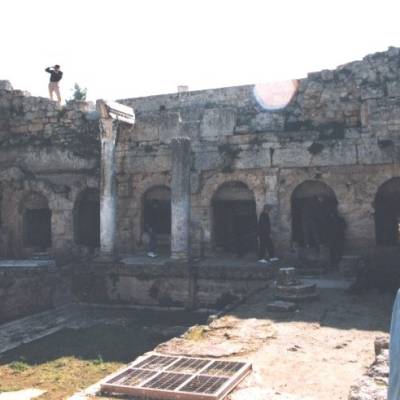
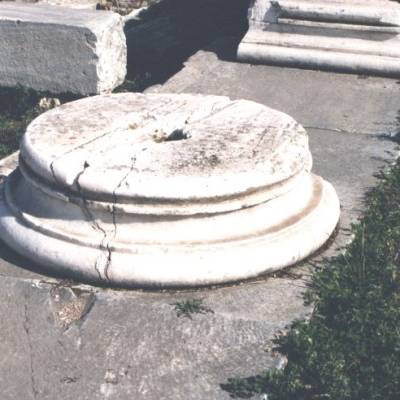
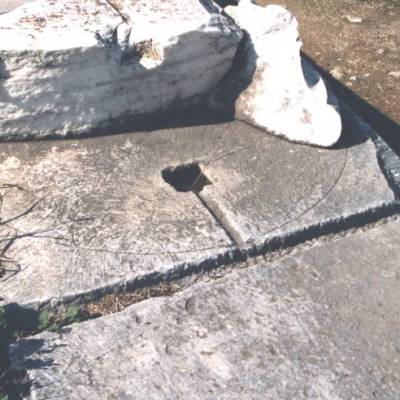
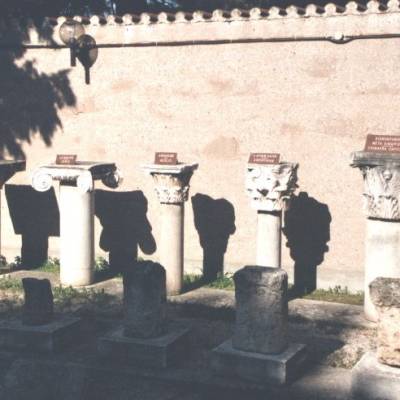
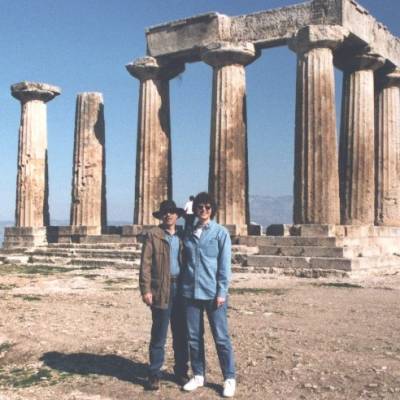
Notes:
The Temple of Artemis, Selcuk, Turkey
Notes:
The worship of Cybele and Artemis which represented the mother goddess has been dated to 7,000 B.C.
Ephesus, Turkey
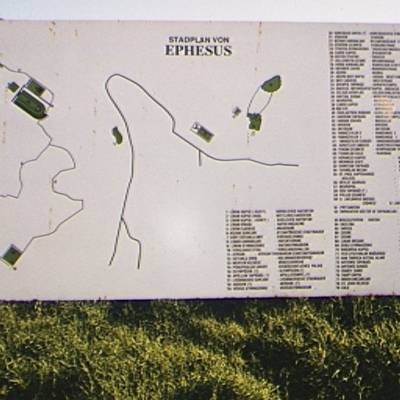
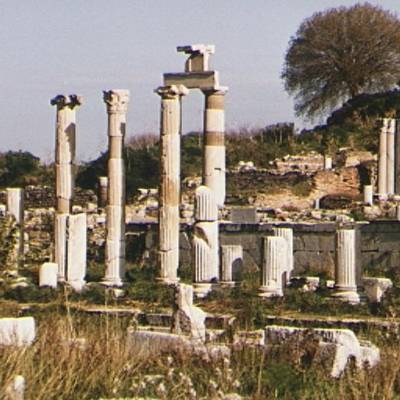

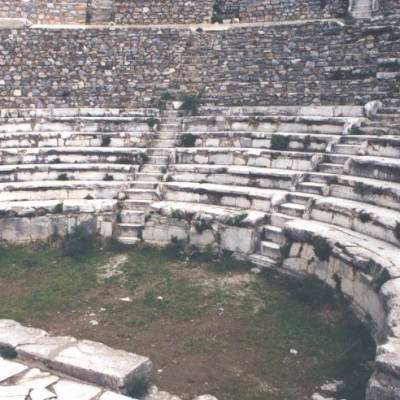
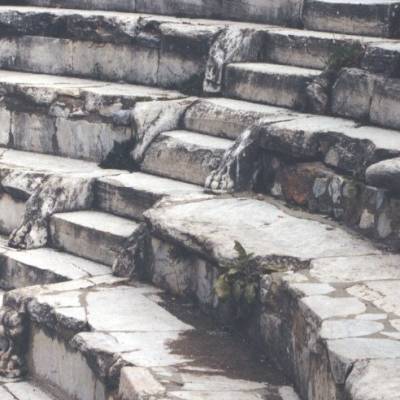
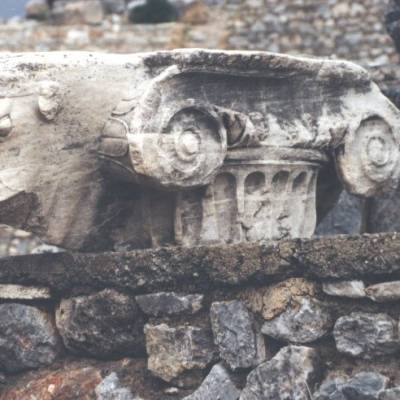
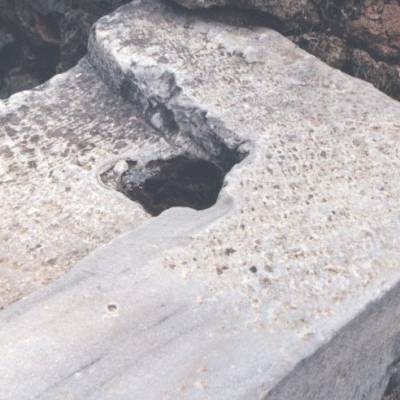
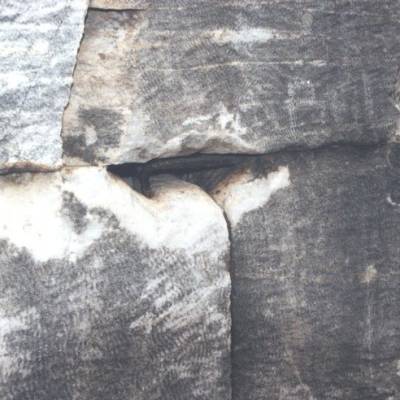
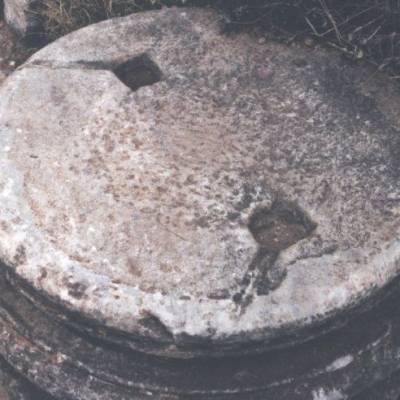

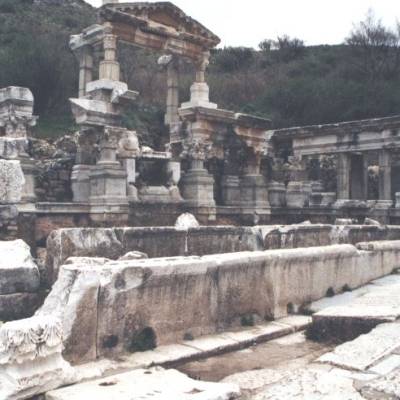
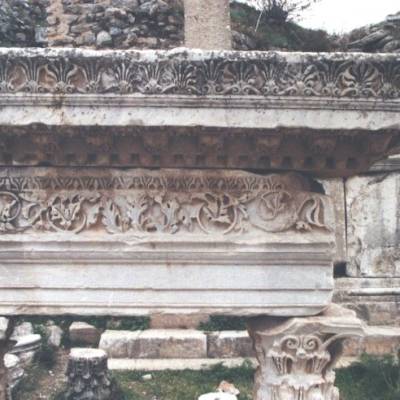
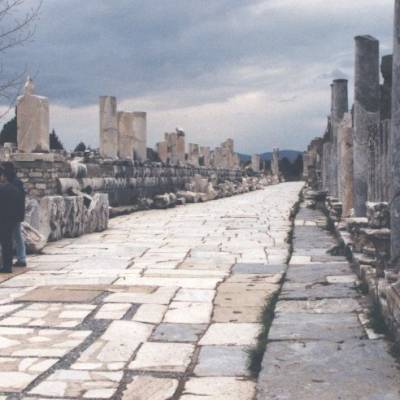
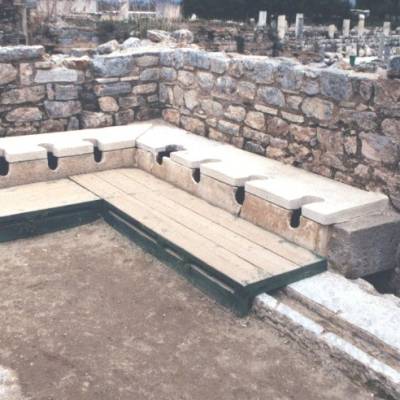

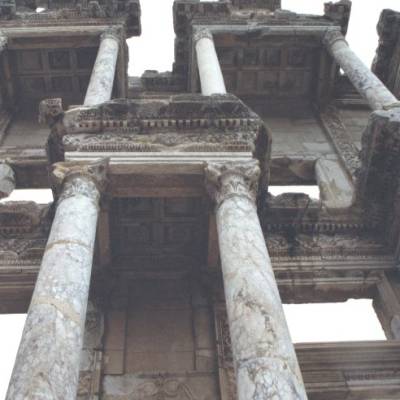
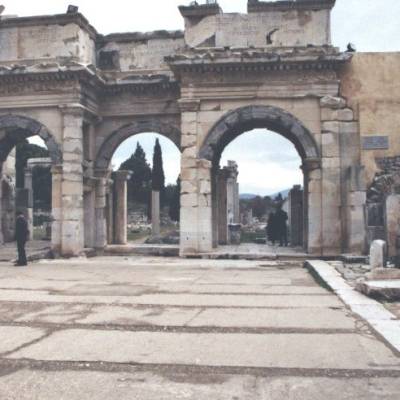
Notes:
Ephesus was an eastern seat of the Roman empire and had very sophisticated water supply and waste removal systems.
When Tiberius Julius Celsu Polemaeanus, proconsul of the Asian province died in 114 A.D. his son Tiberius Julius Aquila built the library as a heroon (mausoleum) for his father (Figure 15 and 16).
The Temple of Athena Polias, Priene, Turkey
Notes:
Built by the architect, Pythios, it was dedicated by Alexander the Great in 334 B.C.
The Temple of Apollo, Didyma, Turkey
Notes:
The Temple of Apollo at Didyma is the Hellenistic temple most often cited. Work began, on this version, about 300 B.C. and continued to 2nd c. A.D. but work was never completed.
This was to be a truly massive temple dedicated to Apollo as judged by its column drums (Figures 5 and 6). For reference my wife, Geri, is about 5'-11“ tall.
Memphis, Egypt
Notes:
Saqqara, Egypt
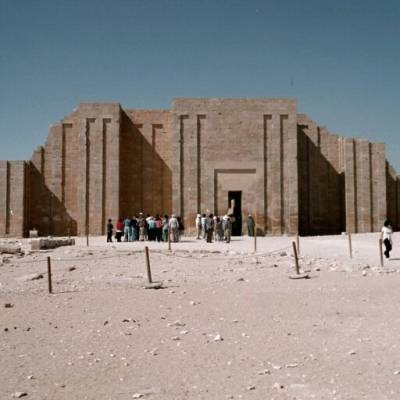

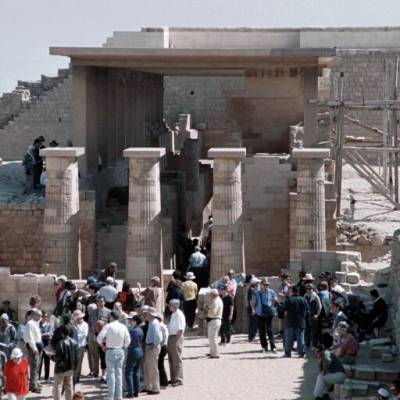
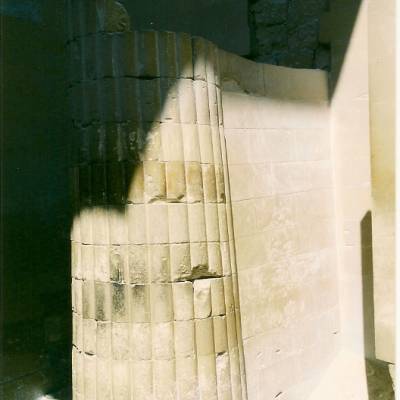

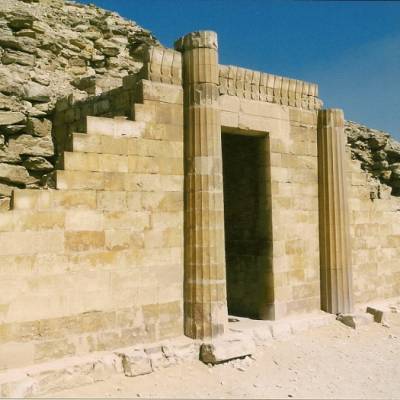
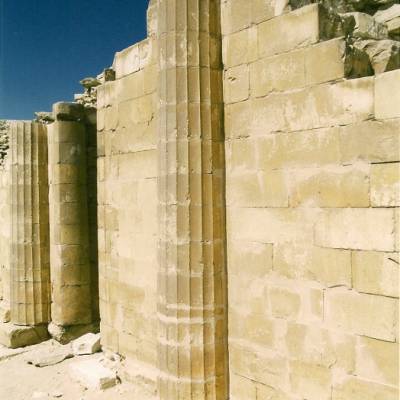
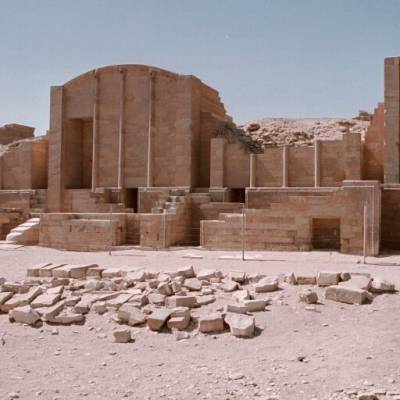
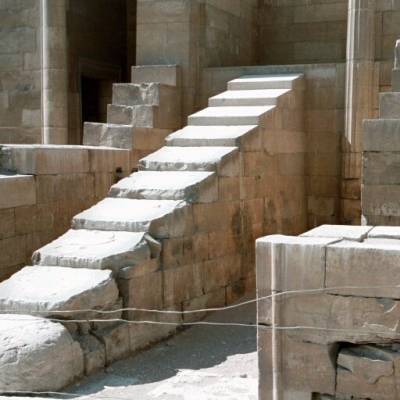
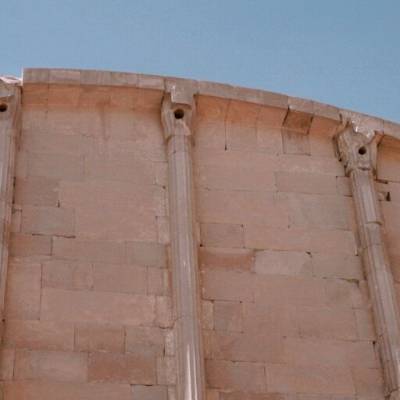
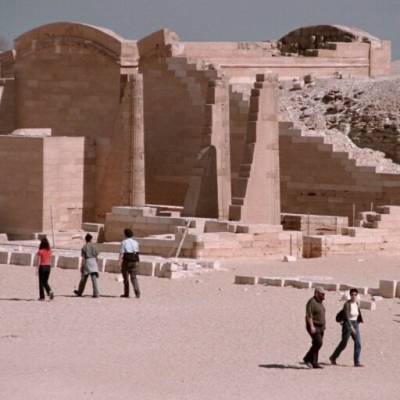
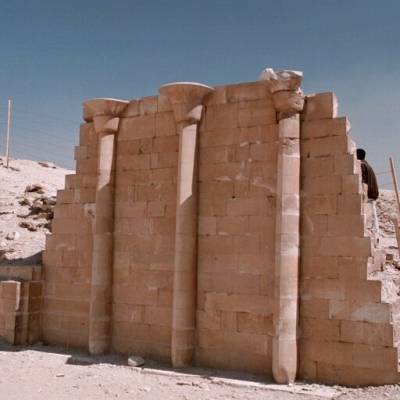
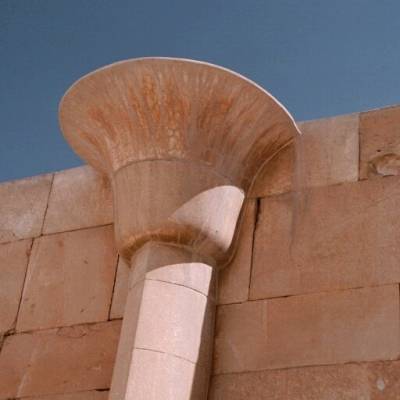

Notes:
Island of Philae, Egypt
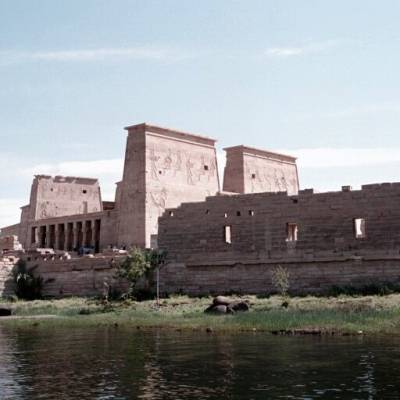
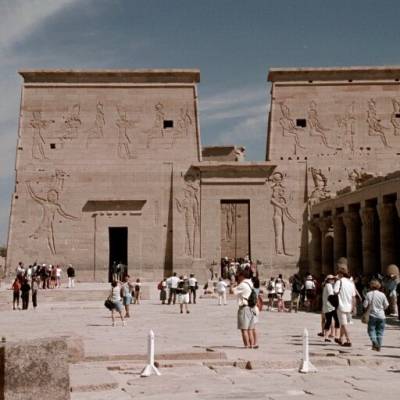
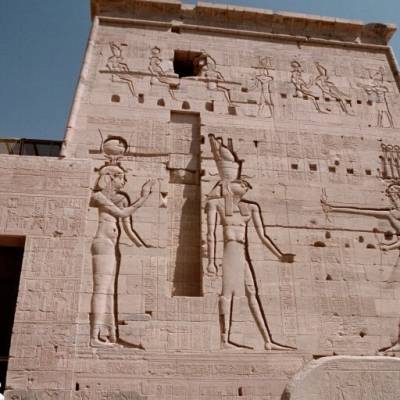
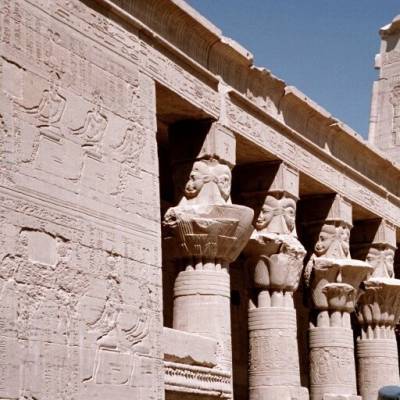
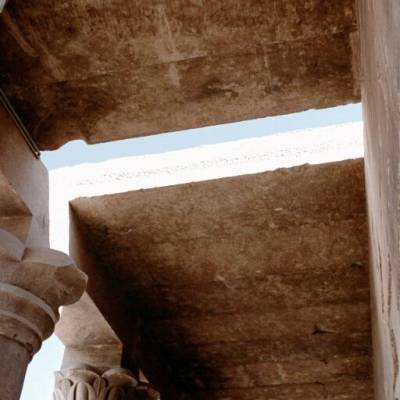
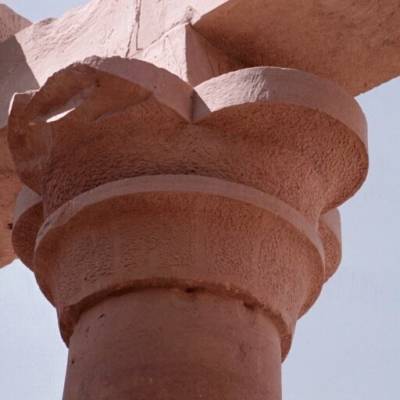
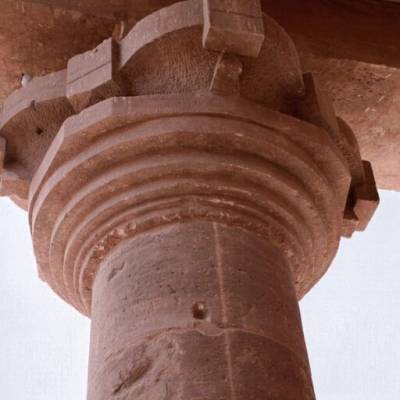
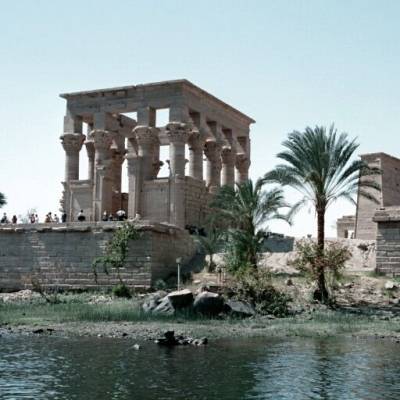
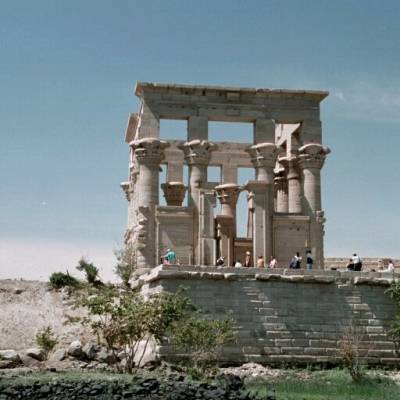
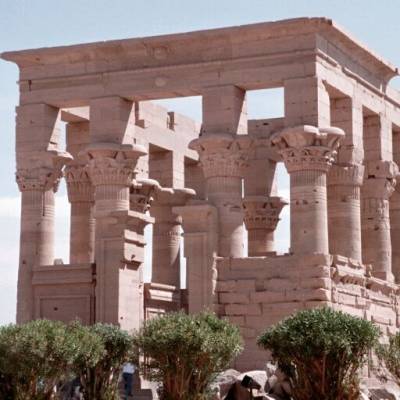
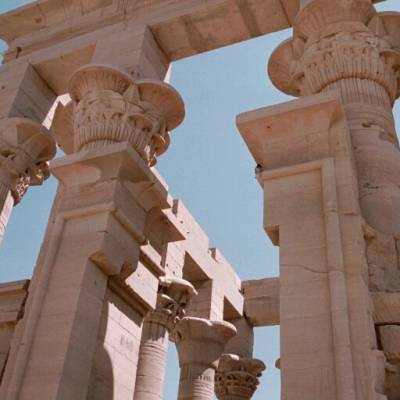
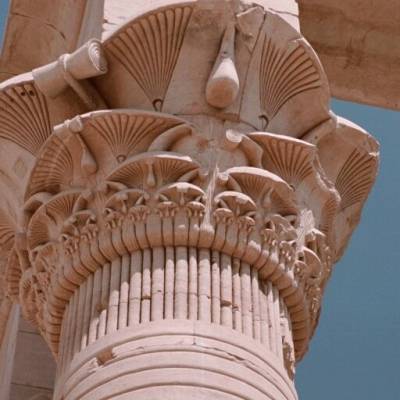
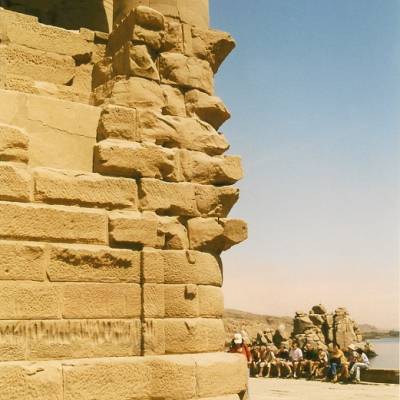
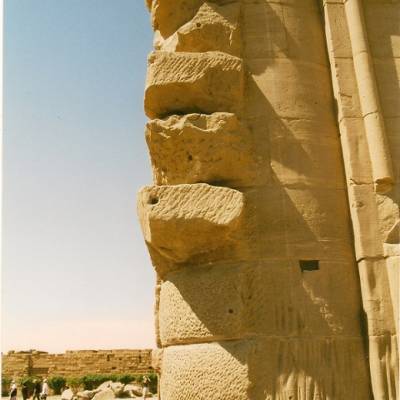
<align justify>Notes:
The temple complex of Isis on the Island of Philae was rescued stone by stone by UNESCO in the 1960s when the High Dam was under construction. This religious complex was used up to the reign of Justinian in 550 A.D. What is apparent, in the construction of these ancient temples, is that they set the stones at the approximate size needed and then dressed them down to the finished surface later (Figures 13 and 14).</align>
Kom-Ombo Temple, Egypt
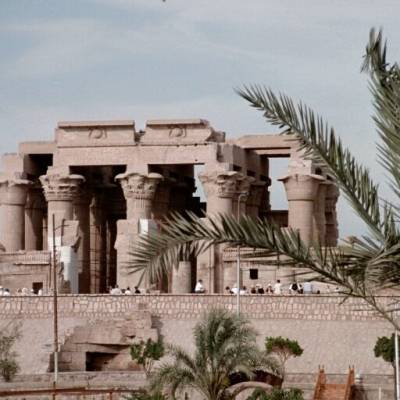

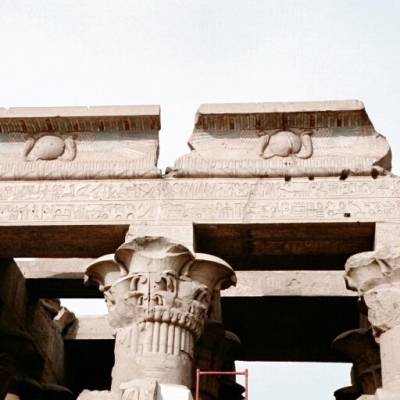
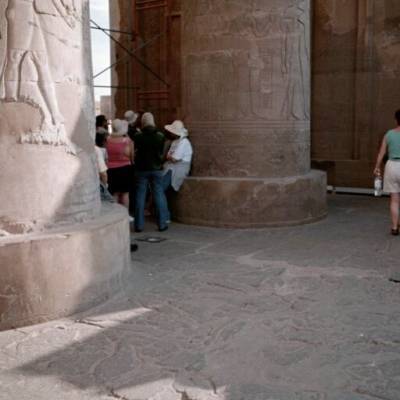
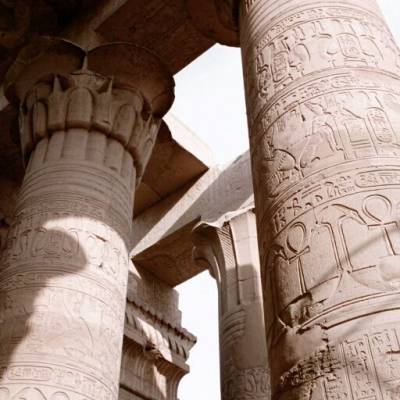
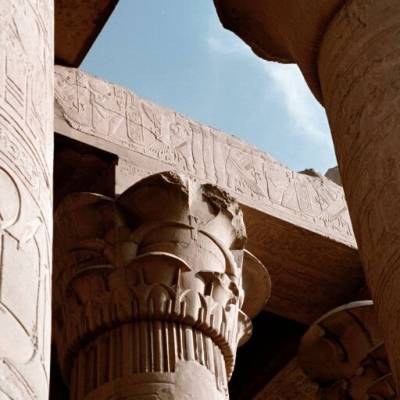

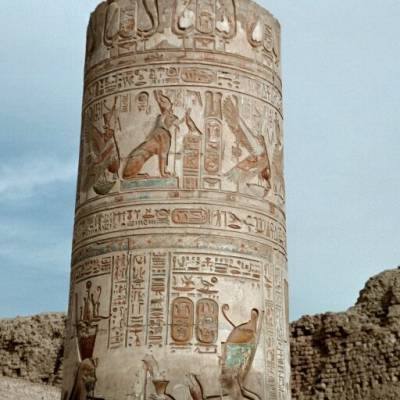
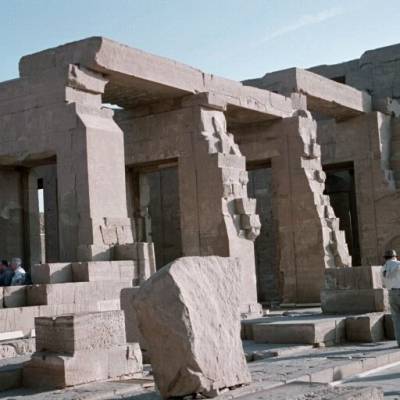


Notes:
This temple sports twin sanctuaries dedicated to Sobek, the crocodile god, and to Haroeris or ‘Horus the Elder’. This temple begun during the Ptolemaic period was completed in the 1st century B.C. Not shown here in these photos but on a temple wall hieroglyphs show their “festival calendar”. The Egyptians really liked to party.
Edfu Temple, Egypt
Notes:
Main temple dedicated to Horus. Construction dates from Ptolemaic Period, 237-57 B.C.
Esna Temple, Egypt
Notes:
The temple, which now stands in the middle of the modern town, about 30 feet below the surrounding buildings, dates to Ptolemaic and Roman times. It was dedicated to Khnum and several other deities. Only the hypostyle hall remains.
Karnak Temple Complex, Egypt
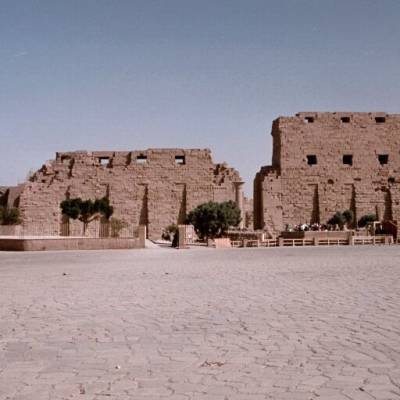
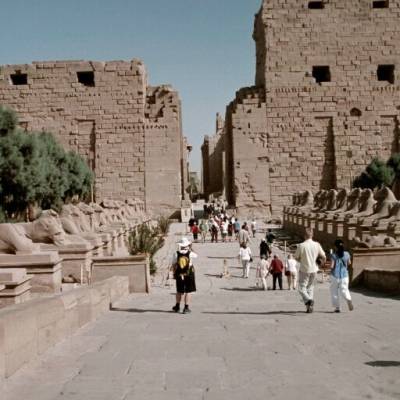
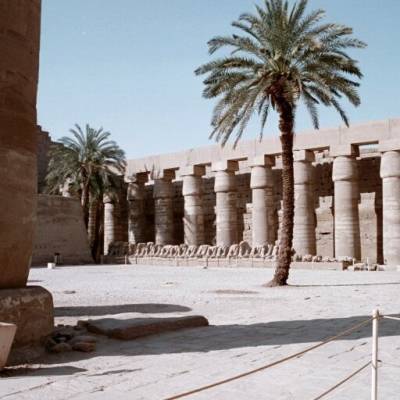

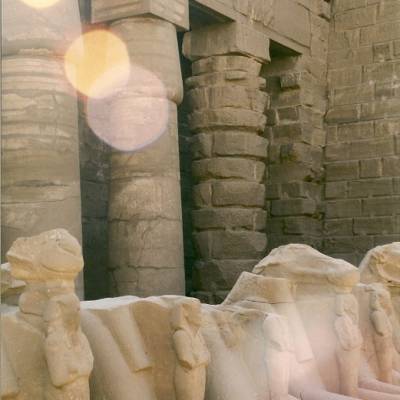
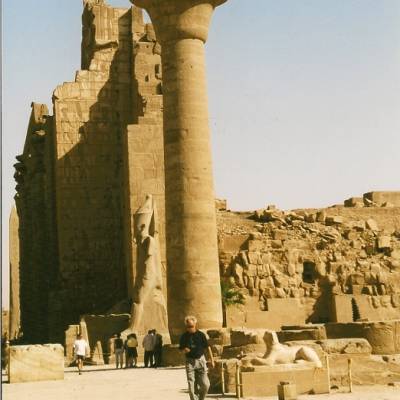
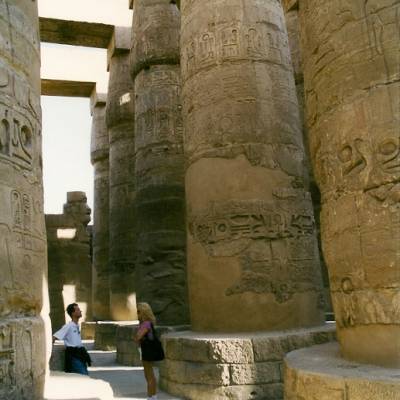
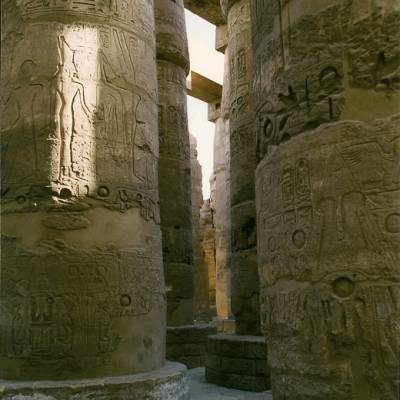
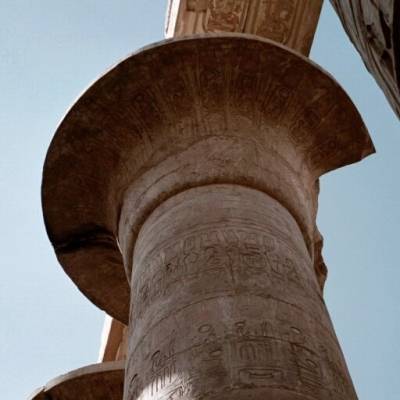
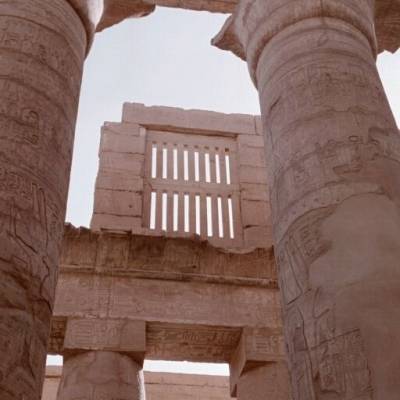
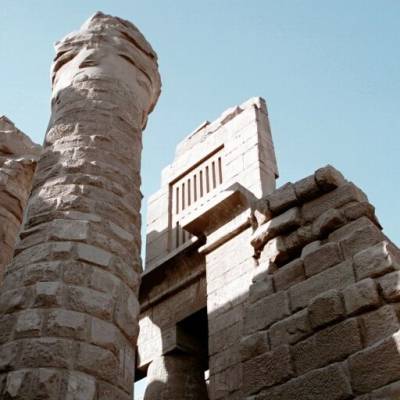
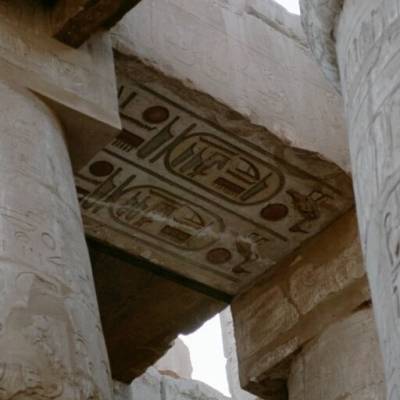
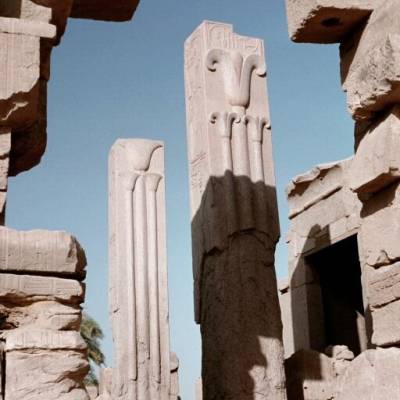
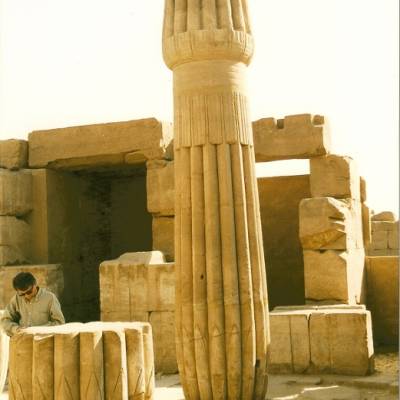
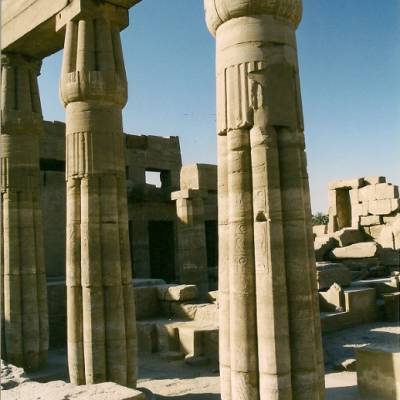
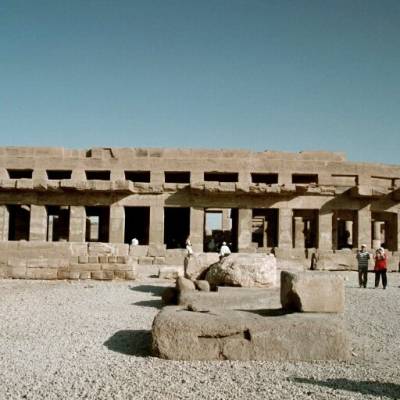
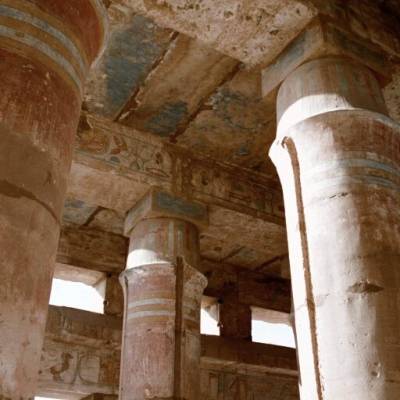
Notes:
The temple complex, which has as its main temple the Great Temple of Amun-Re, dates from the 18th dynasty to the Graeco-Roman times.
There are 134 columns of the open or bundled papyrus form in this complex. The massive post and lintel hall is illuminated by high clerestory windows. The open form papyrus columns are 20 foot in diameter and can hold estimated one-hundred people.
Luxor, Egypt
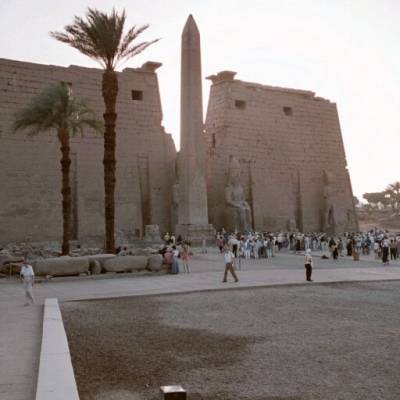
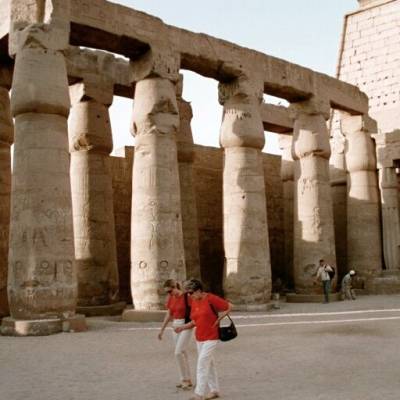
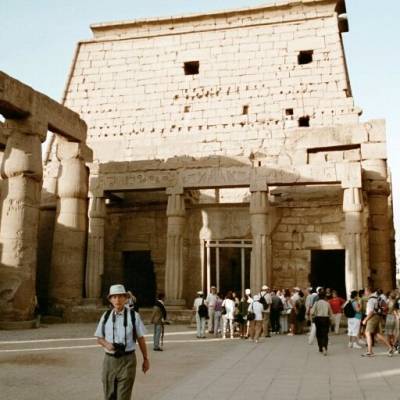
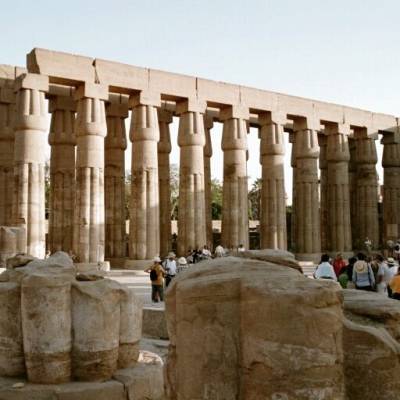
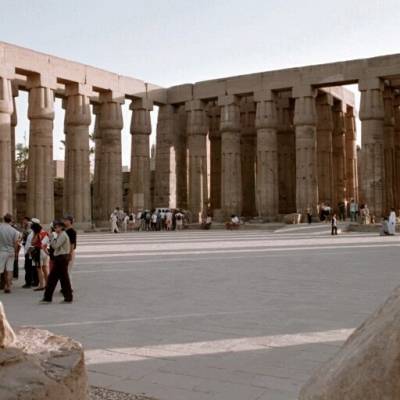
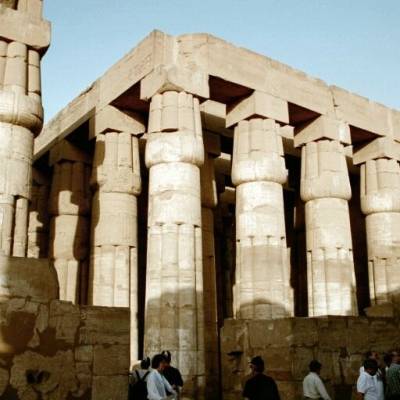

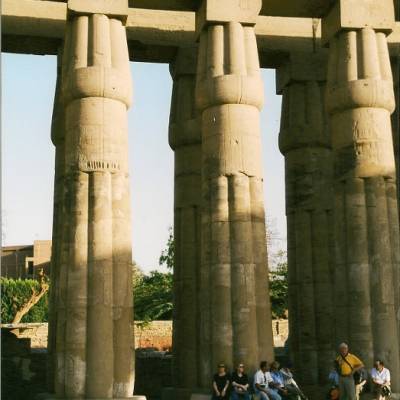
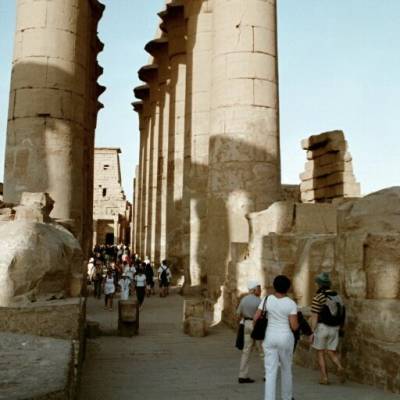
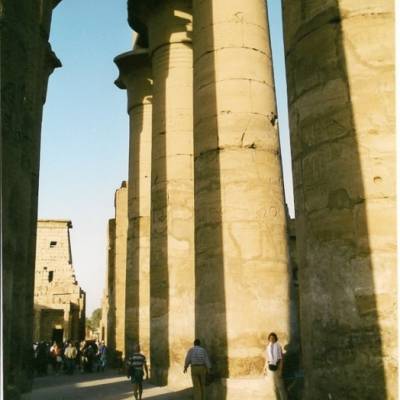
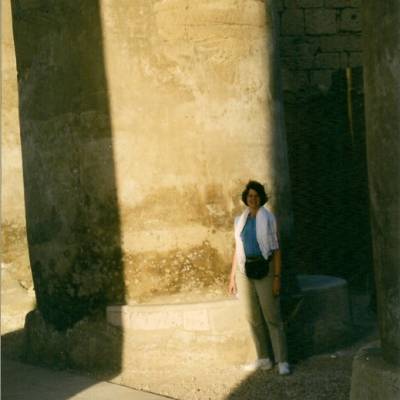
Notes:
The avenue of the sphinxes once joined Karnak and Luxor temples. The temple complex, which has as its main temple the Great Temple of Amun, dates from the 18th dynasty to the Graeco-Roman times.
Deir el-Bahri, Egypt
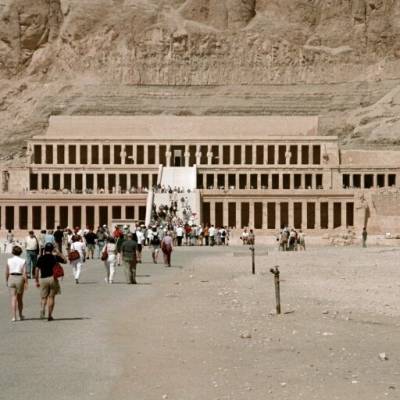
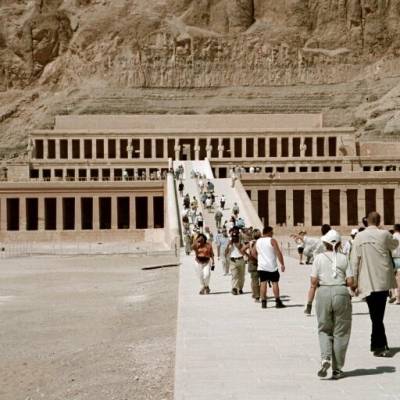
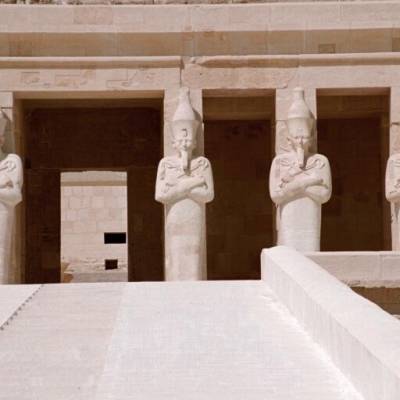
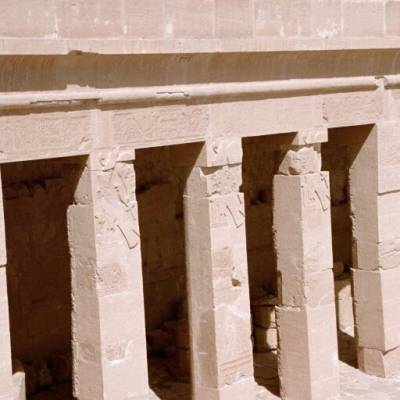
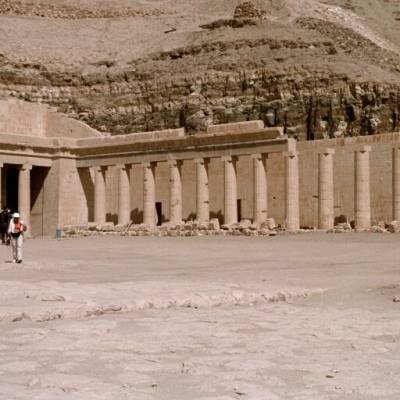
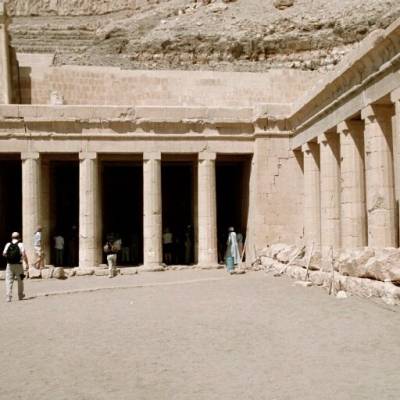
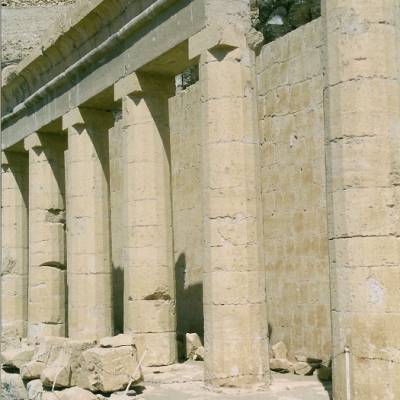
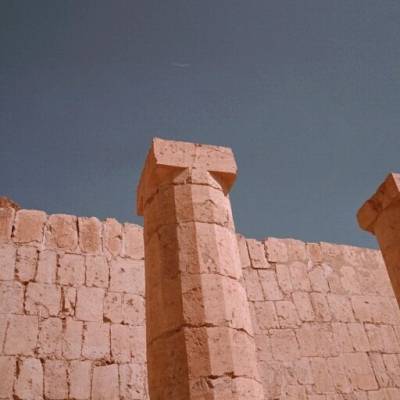
Notes:
The scenes behind the 1st colonnade once showed the Great Barge of Queen Hatshepsut (1479 - 1457 BC) carrying her two obelisks.
With the advent of trade between Greece and Egypt it would seem reasonable that the Egyptians might of influenced Greek building styles and the Proto-Doric columns in Figures 5-8 might of had an influence on early Greek Temple building. One of the earliest Greek Temples being the Temple of Hera in Olympia, Greece (590 B.C.).
Cairo Museum, Cairo, Egypt
Notes:
It's amazing that these simple tools helped build the Great Pyramids and massive temples found here in this country.
RPS STRUCTURAL ENGINEERING, LLC © 2023

